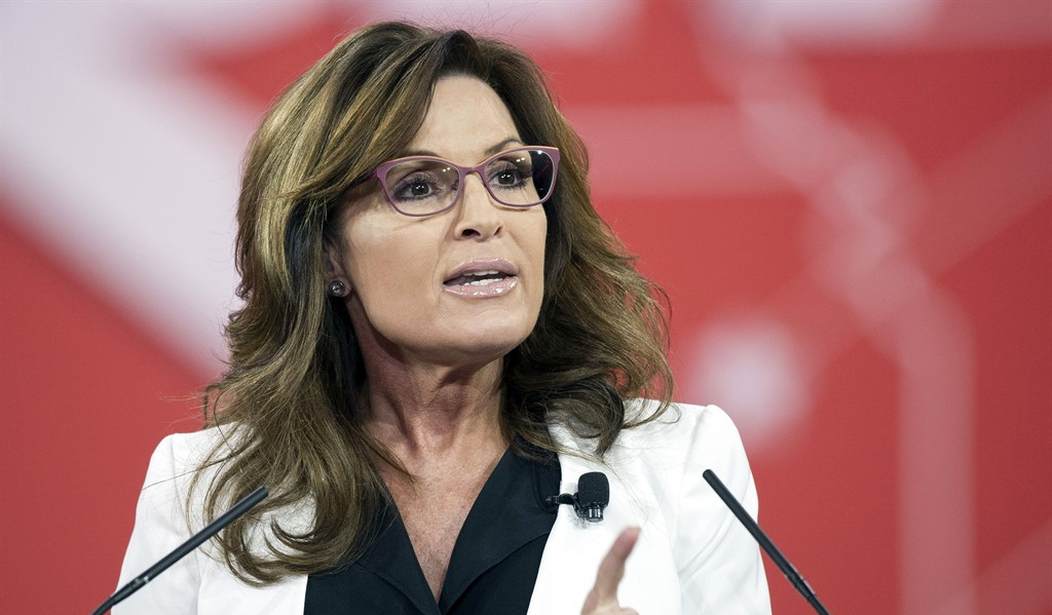Final arguments in the Sarah Palin vs. NY Times libel case took place yesterday. Each side was given two hours to sum up their argument to the jury. At issue is whether or not the Times’ false 2017 editorial connecting Palin to the Tucson shooting violated the legal standard established in 1964. That standard says that in order to be guilty of libel against a public figure like Palin she has to prove the Times acted with “actual malice.” Erik Wemple who has been listening to the trial by remote audio for the Washington Post sums up each side’s arguments. According to the Times’ attorney, this was just a mistake, negligence maybe but not malice. However, after making that argument he then made another claim which had no place in the trial:
Axelrod said that the deliberations about the editorial were on email — not in hallway whispers consistent with animus toward Palin. He said that Palin was inserted into the original draft not by Bennet but by Elizabeth Williamson, who wrote it; he noted that Bennet was pulled into the editing process by a colleague, Linda Cohn, who raised concerns. Axelrod also highlighted the fact that Bennet sent the draft back to Williamson for a post-edit check; he cited testimony from Bennet indicating that he couldn’t sleep after learning of the falsity of the link; he pointed to the swiftness of the correction published the morning after.
Such considerations, among others, militated against any notion of a “conspiracy” against Palin, argued Axelrod.
As Wemple is quick to point out, Palin’s attorneys never claimed there was a “conspiracy” to libel her. So why is he framing his defense as if they did?
Except Palin’s attorneys didn’t mount a conspiracy case, as Turkel noted in his 15-minute rebuttal. “I never used the word conspiracy once in my closing,” says Turkel, who wondered aloud where the word had come from. This was an important distinction: In questioning of Bennet’s colleagues, Palin attorney Shane Vogt betrayed no sense that he suspected these editorial staffers of anything untoward. Rather, he appeared focused on establishing what topics they were researching and what materials the effort had surfaced…
In all, contended Turkel, Times staffers supplied “seven links to content that’s supposed to educate him about what they’re writing here.”
This wasn’t an “honest mistake,” argued Turkel. It was a “reckless mistake.”
Reckless disregard for the truth is part of the standard for establishing “actual malice” toward a public figure. Palin’s attorneys don’t have to prove that the Times’ employees were gathered in the break room plotting to libel Sarah Palin. They just have to prove that the Times acted with reckless disregard for the truth.
What’s the difference between an honest mistake and a reckless one? I’m not sure what the law says about making that distinction but as someone who writes stories on a deadline, an honest mistake is one in which the author made an effort to check the facts but was either mislead themselves by a source or possible reached a false conclusion based on something they read and misunderstood. It happens. They’re still at fault for passing on or introducing the error and a correction is needed, but their effort to check the facts shows they were at least trying to get it right.
A reckless mistake is a mistake made where it’s clear the author made no effort to get the facts before publishing something. And, to be honest, everyone who writes on deadlines has made reckless mistakes, such as misspelling someone’s name. Does James Bennet’s name have two T’s or one? (It has one but I’ve made the mistake of spelling it “Bennett” before.) Those kinds of reckless mistakes are not very significant but when you’re claiming someone incited a mass murder, a little more care is required. And in this case, James Bennet just didn’t make any effort to be careful.
The fact that the Times’ attorney is bringing up a “conspiracy” in his closing arguments when no conspiracy has been alleged seems a bit like desperation. I’m sure the Times’ attorneys are top notch lawyers so a claim like that wasn’t made off the cuff. It strikes me as an attempt to confuse the jury about where the line is between an innocent mistake and libel. Palin doesn’t have to prove Bennet was part of a conspiracy to smear her, she just has to prove he had the facts about the significant claim he was making were at his fingertips and chose not to look at them.
Finally, here’s an NBC News clip covering the closing arguments. According to NBC News legal analyst Danny Cevallos, the Times’ attorneys also brought up the significant ramifications this case could have for the media writ large. Cevallos seemed surprised the Times was allowed to do that because, like the conspiracy claim, it’s really not relevant to the facts of this case.








Join the conversation as a VIP Member